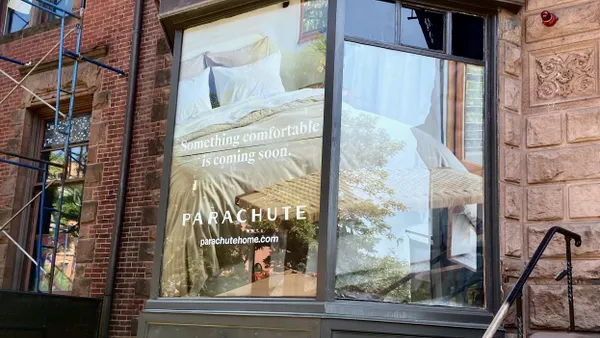Dive Brief:
-
Online shoppers are most turned off by a poorly designed menu (41.2%), followed by search capabilities that are too basic (29.8%) and products that are buried behind too much branding (26.4%), according to a new study from Corra. What’s more, the vast majority (68.9%) said that encountering one of these pet peeves would cause them to shop around.
-
The study also found that several other varied factors could make consumers think twice about an e-commerce purchase. Those include: Finding a bad review of the product (60.6%) or not finding company contacts info on the site (9.7%), as well as shopping on a site that has either an outdated website (8.8%), poor navigation features (6.9%), a lack of transparent policies (6.1%) or spelling errors (5.1%).
-
The news wasn’t all bad for e-commerce sites. When asked how they preferred to contact an e-commerce business for questions or support, many consumers (52.4%) expressed a preference for the developing virtual assistant or live chat category, while 32.8% still prefer e-mail communication and 14.5% prefer to talk over the phone.
Dive Insight:
In a retail landscape where an e-commerce strategy can make or break sales, any insight into how customers feel about the platform is valuable.
Corra’s findings suggest that there are actually a host of factors that matter to consumers when shopping online and span the length of the path to purchase. Poorly functioning website features can turn customers away to a competitor before even shopping, but — perhaps worse — the design of a company’s shopping cart can also turn customers off from making a purchase. Consumers responding to Corra’s study listed shopping cart frustrations that included everything from prices that aren’t upfront (33%) to having to create an account (26.5%) to high shipping costs (22.9%).
With e-commerce sales rising, retailers can’t afford to fall behind on their online strategy, especially considering the benefits that retailers like Walmart have seen from investments in e-commerce. The retail giant went from being a big name with a relatively small e-commerce presence to, in its first quarter, a company that saw a 63% increase in online sales, thanks in part to its acquisition of online retailer Jet. Since then, Walmart has expanded its e-commerce presence to include acquisitions of men’s clothing site Bonobos, women’s fashion site Modcloth and outdoor apparel site Moosejaw. On the other hand, companies like Hibbett Sports, who are late to the game on e-commerce efforts, are falling behind as a result.
While many are calling for e-commerce sites to spend more time on personalizing the online customer experience, basic functionality cannot fall by the wayside. With customers willing to shop around if they experience site difficulties and 60% of Gen Z refusing to use an app or website that is slow to load, retailers should focus on making the online experience as streamlined and user-friendly as possible.













